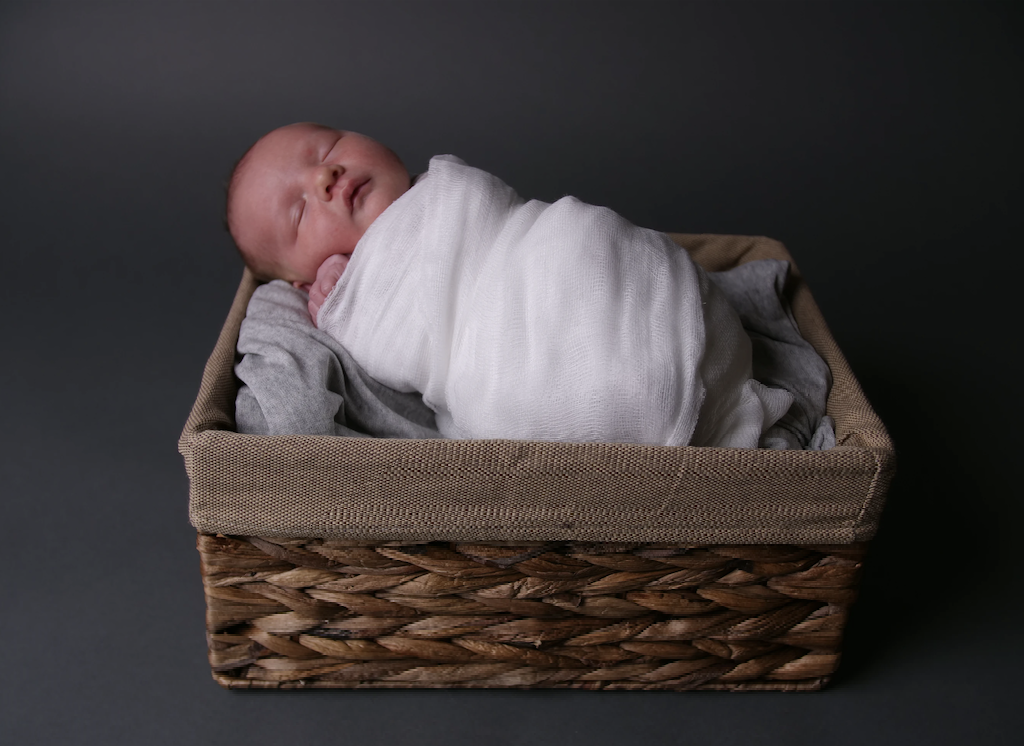Everybody warned you that getting sleep when you have a newborn was going to be nearly nonexistent. (And for the most part, ugh, they were right.) But after giving birth, you found that your little one liked being wrapped up like a baby burrito and slept somewhat better, which made the nights not so terrible. That’s why you might be hesitant to stop swaddling your baby for fear that they (and you) will never sleep soundly again — but you’ll have to, especially for safety reasons.
What Is Swaddling?
They say that all good things must come to an end, and sadly, that’s the case with swaddling. But to understand why a swaddle has a certain time limit, you need to know how it works in the first place, because it’s so much more than a baby blankie. “A swaddle provides close comfort and keeps arms tucked in so that they don’t jerk suddenly with the startle reflex, which can sometimes be so strong that it will wake your baby up.” Dr. Stephanie Lee, M.D., MPH, FAAP, a pediatrician explains to Celebrity Parents. “These reflexes are normal and not harmful, but it can be strong enough to wake your baby.” And as any bleary-eyed parent can attest to, keeping your newborn safely sleeping (especially at 3:00 a.m.) is the number one nighttime goal.
This Is When You Should Stop Swaddling Your Baby
Swaddling recreates the feeling of being in utero, where everything is cozy, and in turn, Baby feels safe and secure. The day will come, though, when your child needs to stop using the swaddle — and it might be sooner than you think. “Babies do best when swaddling lasts until they’re about 4-months-old,” advises Dr. Harvey Karp, M.D., a board-certified pediatrician.
Why? There are a few reasons. First, swaddling your baby can increase the risk of hip dysplasia, which is connected to swaddling the legs either extended or in adduction (i.e. closer to Baby’s belly), according to researchers.
Ironically, swaddling your baby past the 4-month sweet spot can actually impact their sleeping — and not in a good way. “Swaddling at an older age can also have a negative effect on sleeping,” says Dr. Steven Abelowitz, M.D., FAAP, Founder and Medical Director of Coastal Kids Pediatrics and Medical Director of Pediatric Associates. “As they get older, many babies want to have more mobility in their extremities.” Being wrapped up might make them feel uncomfortable, causing their sleep to be disturbed. Adds Abelowitz: “Prolonged swaddling could also potentially limit appropriate developmental milestones in some babies.”
Here’s When Swaddling Can Become Dangerous
While hip dysplasia, poor sleep, and missed milestones are certainly important, swaddling your baby can actually become life-threatening after a certain point. After all, around the 4-month mark, babies start to roll over, and that’s when problems can occur. “The danger is that a swaddled baby who can already roll over can get stuck face-down without arm mobility,” Dr. Amy Conrad, M.D., a board-certified pediatrician explains. “If an unswaddled baby who was put on his/her back to sleep turns independently over during sleep, it’s okay to let them continue sleeping on their stomach. If they were swaddled in this position, however, they wouldn’t have the mobility to move their head around as needed, which can lead to accidental suffocation.” That’s why the guidelines are to stop swaddling when Baby shows an attempt to roll over to avoid accidental suffocation and reduce their risk of SIDS (Sudden Infant Death Syndrome.
What Can You Use Instead Of A Swaddle?
But let’s say that Baby still likes to be swaddled. Can you safely continue swaddling them even after they’ve shown signs of rolling over? You might need to use a transitional swaddle or a sleep sack instead, according to the experts. “In my experience with my baby, I enjoyed the Halo Sleep Sack with swaddle because it was useful for many months beyond transitioning out of the swaddle, since parents can choose to wrap the swaddle arms around Baby’s chest and stomach once they transition out of the swaddle,” Dr. Lauren Chiriboga, M.D., a board-certified pediatrician at Nicklaus Children’s Hospital, says. “This is nice for the baby because it makes them feel as if they are being lightly hugged while asleep.”
Adds Karp: “A lot of parents prefer the Velcro/zipper swaddles that takes the guesswork out of swaddling. I’m partial to the Sleepea Swaddle — many parents love its breathable and super-soft organic cotton, it gives babies the womb-like embrace they crave, while its secure Velcro inner-arm and leg flaps prevent sneaky little escapes. And Sleepea’s shoulder snaps make it an ideal transitional swaddle, too. Parents can easily and safely allow their baby to sleep with one or both arms free without the risk of the swaddle unravelling.”
But if Baby is tossing and turning during the night, you should stop using muslin cloths for safety reasons. “Babies can move around a lot throughout the night, causing the swaddling cloth to become undone, which increases the risk of baby’s face becoming covered by a portion of the cloth,” adds Chiriboga. “This can lead to unintended death by suffocation and is associated strongly with SIDS.”
Although your child might like the feeling of being wrapped up, using a weighted blanket or swaddle isn’t a good idea, either. The American Academy of Pediatrics (AAP) discourages the use of weighted swaddles, clothing, or objects on or near the baby. “There is not enough evidence on what weight is actually safe to put in these blankets or if these products on the market even provide better sleep for babies, whereas we know that babies’ chests are more fragile than adults and usually breathe at a faster rate, both things that could be negatively affected when a weighted blanket or swaddle is lying on their chest,” explains Lee.
Listen, there’s nothing wrong with wanting to get a decent night’s sleep. And while swaddling your baby might have made them sleep more soundly in the past, be aware of the signs that your baby may be transitioning out of the swaddle stage, such as lifting their head up more, or rolling onto their shoulders or side. You should speak with your pediatrician to discuss your options before you decide to stop swaddling your baby, since they might be able to recommend a transitional swaddle. That way, you’ll be able to create a comfortable— and safe — sleep environment for your baby that will have you all resting easy.
Study cited:
Sleuwen, B., Engelberts, A., Boere-Boonekamp, M., Kuis, W. Schulpen, T., L’Hoir, M. (2007) Swaddling: a systematic review, Pediatrics
Experts:
Dr. Stephanie Lee, M.D., MPH, FAAP, a pediatrician
Dr. Harvey Karp, M.D., a board-certified pediatrician
Dr. Steven Abelowitz, M.D., FAAP, Founder and Medical Director of Coastal Kids Pediatrics and Medical Director of Pediatric Associates
Dr. Amy Conrad, M.D., a board-certified pediatrician
Dr. Lauren Chiriboga, M.D., a board-certified pediatrician at Nicklaus Children’s Hospital



